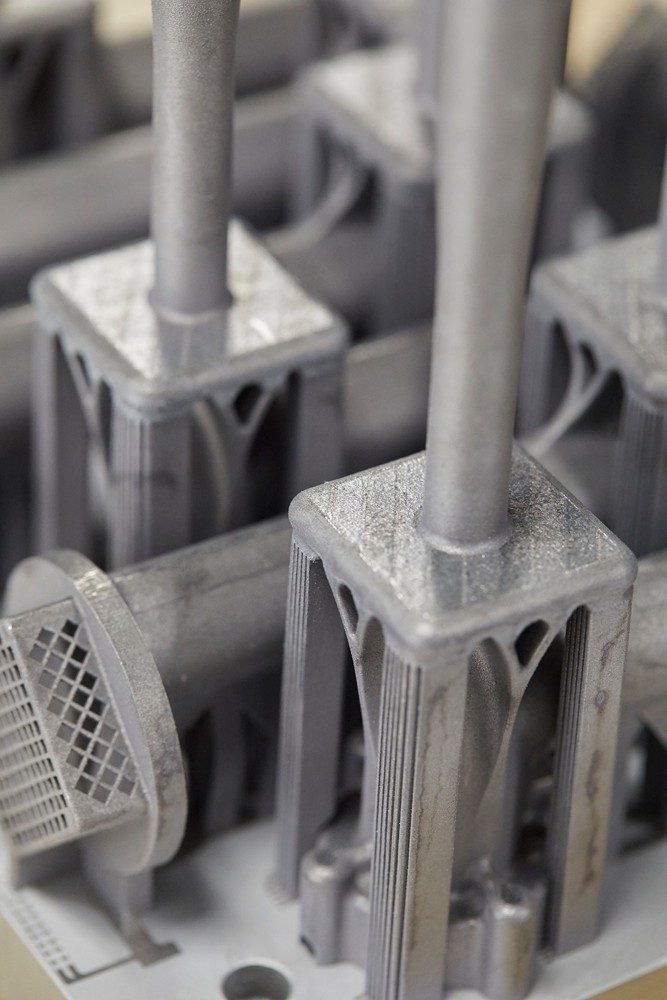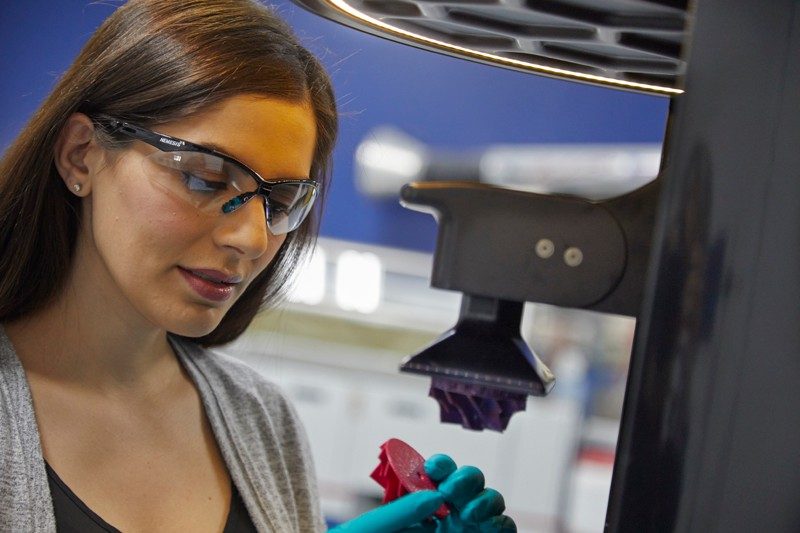Power management giant Eaton is increasing its 3D printing investment with the launch of a new metal 3D printing program with its Vehicle Group. The program is meant to improve the company’s efficiency and cut development times. The first metal 3D printer was installed at its Kings Mountain, N.C. facility, with the intention to deploy polymer 3D printing throughout the company by the first quarter of 2021.
Eaton is a $21.4 billion company with about 92,000 workers dispersed across 175 countries. Under its Aerospace Group, the firm has already worked with GE Additive, adding one Concept Laser metal 3D printer to its Innovation Center in Michigan and another to in the R&D lab at its India-based Global Innovation Center. The partnership included consulting with GE Additive’s AddWorks for how to deploy metal additive manufacturing to its aerospace operations. Through a relationship with Bremen Castings, Inc., Eaton has also explored 3D printing sand molds. The company is already 3D printing parts for Airbus, as well.

3D-printed latticed aluminum aerospace parts, which were produced with Laser Powder Bed Fusion on a Concept Laser M2 UP1 3D printer. Image courtesy of Eaton.
The company already uses metal and polymer 3D printers across the Vehicle Group for tooling applications, such as poke-yokes and gauges. This latest announcement signals further dedication to the technology. Under its Vehicle Group, Eaton will use AM to produce fixtures, safety devices, robotic grippers for assembly and handling, as well as replacement parts for equipment. Eaton plans to utilize 3D scanning to reverse engineer parts that can then be improved with 3D printing, such as through the use of topology optimization and part consolidation.

An engineer inspects a urethane methacrylate (UMA) impeller that was 3D printed using digital light synthesis (DLS) technology.
While the company was not specific as to what metal 3D printers it will be installing, it has said that it is a type of bound metal printing, perhaps from Markforged or Desktop Metal. In a press release, Eaton described metal 3D printing as follows:
“The process to print metal parts and components begins with powdered metal stored in a rod and held together by wax and a polymer binder. Similar to extrusion, the metal is melted, and the 3D printer begins to add layer after layer, based on its programmed schematics.
“Once the printing process is complete, the part or component is run through a chemical bath to remove most of the polymer binder. The part then goes through a furnace to remove the remaining wax and polymer, and to fuse the metal material in a high-density structure.”
The metal 3D printing program is a part of the Vehicle Group’s larger Industry 4.0 strategy, which includes other technologies such as augmented reality (AR), autonomous robots, and digital simulation. Microsoft’s HoloLens 2, for instance, is being used for remote assistance amid the COVID-19 pandemic. AR is also being used for training purposes. Equipment for auto production are also being networked in order to collect and analyze real time information for plant management. Automated guided vehicles are utilized to transport materials throughout production facilities, while COBOTs are performing complex, repetitive tasks. Simulation are allowing the company to design or redesign manufacturing cells and assembly lines, leading to a reported 10 to 30 percent increase in productivity.
Given Eaton’s stature as a company, it’s important to note that AM is now spreading from its Aerospace to its Vehicle Group. As the technology is now widely deployed in aircraft production, we may now see it further leveraged in the automotive industry. In this case, Eaton seems to be using it primarily to aid in production, rather than to manufacture end parts, but that will only serve to educate its workers about the technology and ultimately lead to final production applications.
Subscribe to Our Email Newsletter
Stay up-to-date on all the latest news from the 3D printing industry and receive information and offers from third party vendors.
You May Also Like
Further Understanding of 3D Printing Design at ADDITIV Design World
ADDITIV is back once again! This time, the virtual platform for additive manufacturing will be holding the first-ever edition of ADDITIV Design World on May 23rd from 9:00 AM –...
3D Printer Maker EVO-tech Reborn as NEVO3D — Once More With Feeling
EVO-tech was a 3D printing service and original equipment manufacturer established in 2013 and based in Schörfling am Attersee, Austria. The company produced high-quality material extrusion systems featuring linear bearings,...
3D Systems Brings 3D Printed PEEK Cranial Implant to the U.S. with FDA Clearance
For more than 10 years, 3D Systems (NYSE:DDD) has worked hand-in-hand with surgeons to plan over 150,000 patient-specific cases, and develop more than two million instruments and implants from its...
CDFAM Returns to Berlin for Second Annual Symposium
The second CDFAM Computational Design Symposium is scheduled for May 7-8, 2024, in Berlin, and will convene leading experts in computational design across all scales. Building upon the first event...































